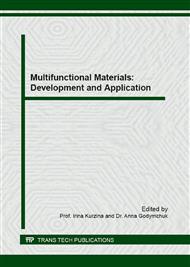p.500
p.506
p.511
p.519
p.525
p.533
p.540
p.548
p.555
Biological Detoxification of Lignocellulosic Hydrolysates for Improved Biobutanol Production
Abstract:
The fuel butanol yield and productivity obtained during fermentation of lignocellulosic hydrolysates is decreased due to the presence of inhibiting compounds, such as carboxylic acids, phenolic compounds and furans formed during hydrolysis. The main objective of this work is to evaluate the biological detoxification method of lignocellulosic hydrolysates when two forms of specially adapted activated sludge are used for improved biobutanol production. We investigated the removal of toxic substances from an enzymatic hydrolysate of miscanthus cellulose and an acid hydrolysate of spruce by specially adapted activated sludge of the urban wastewater treatment plants and by activated sludge of the pig farm wastewater treatment plants. Activated sludge treatment removed 98 % and 99 % of 5-hydroxymethylfurfural (5-HMF) and furfural from the hydrolysate respectively. Fermentation of treated hydrolysates by Clostridium acetobutylicum ATCC 824 was successful. Control experiments on fermentation of untreated hydrolysates showed a complete absence of fermentation
Info:
Periodical:
Pages:
525-530
Citation:
Online since:
February 2016
Authors:
Price:
Сopyright:
© 2016 Trans Tech Publications Ltd. All Rights Reserved
Share:
Citation:


